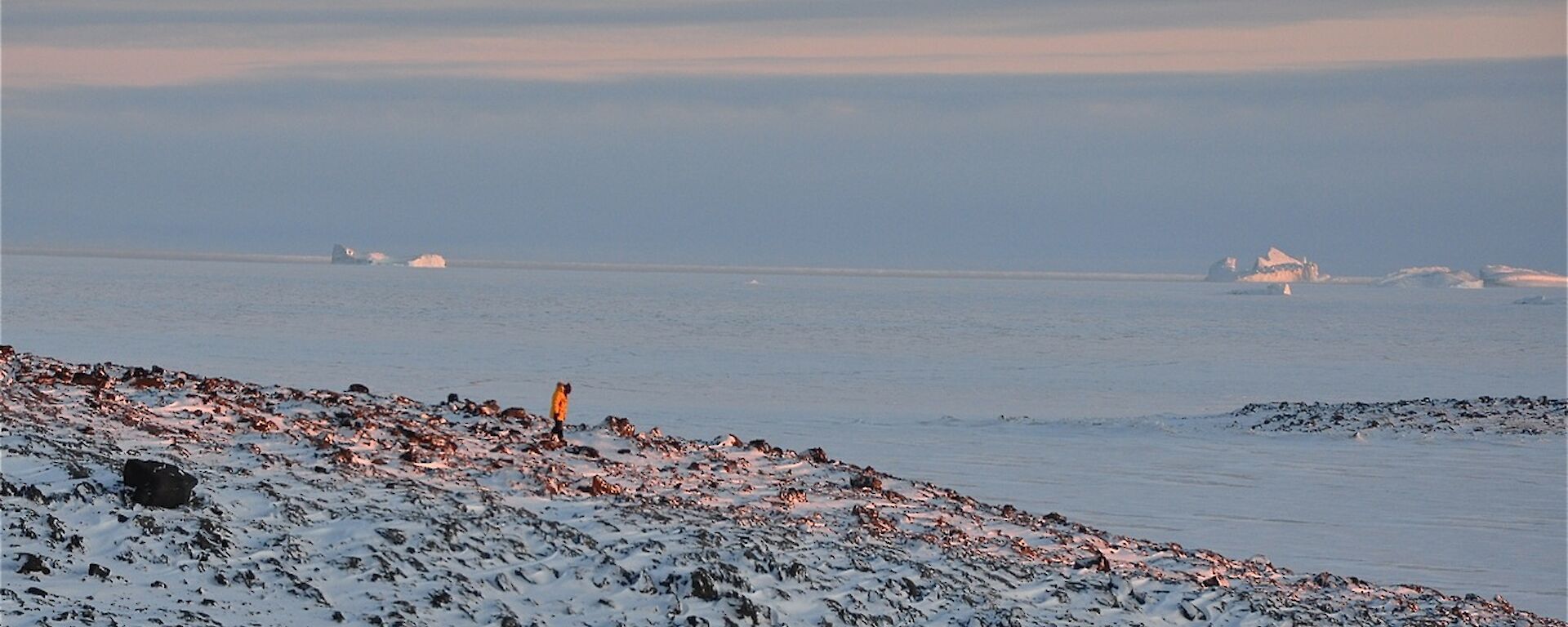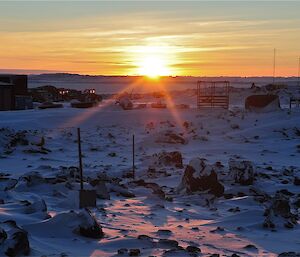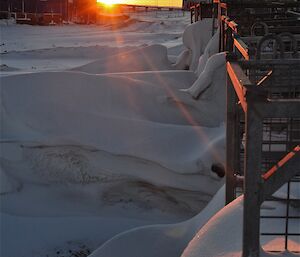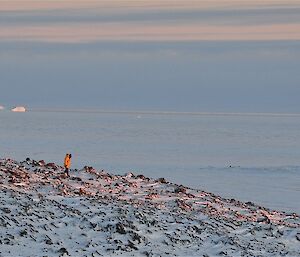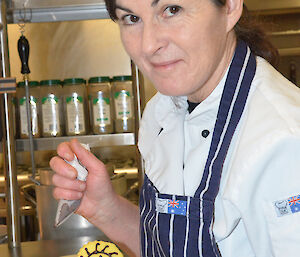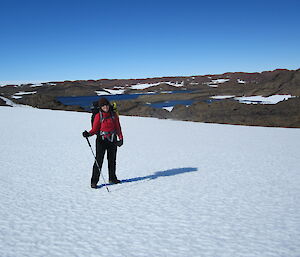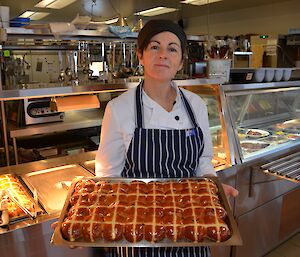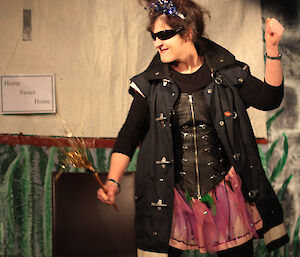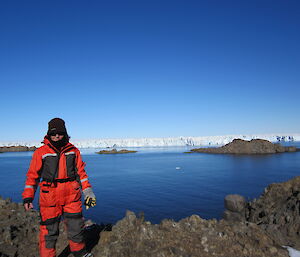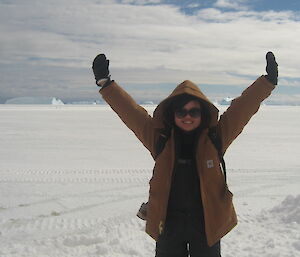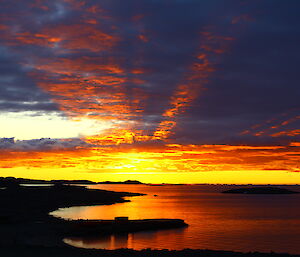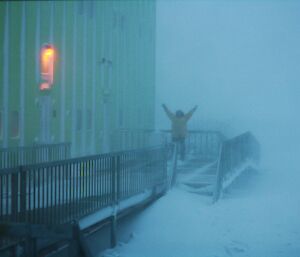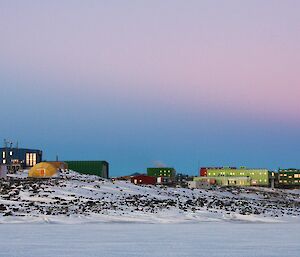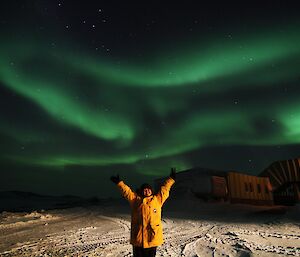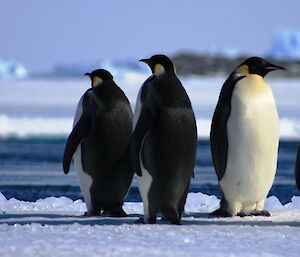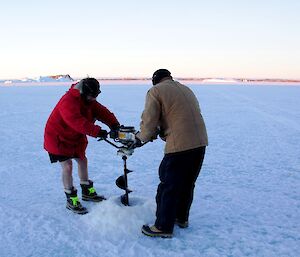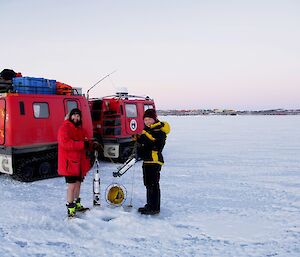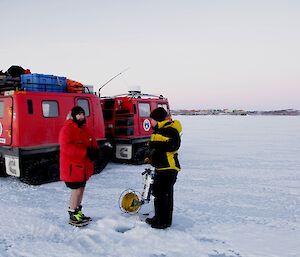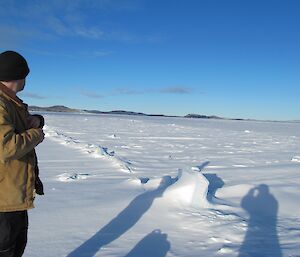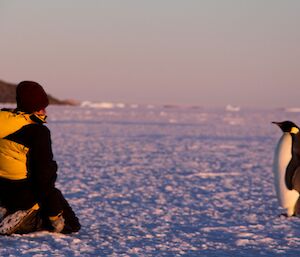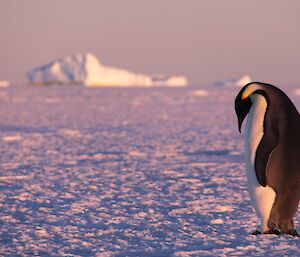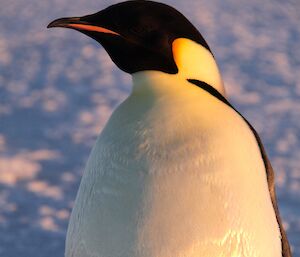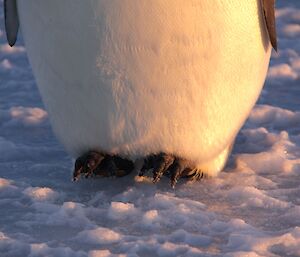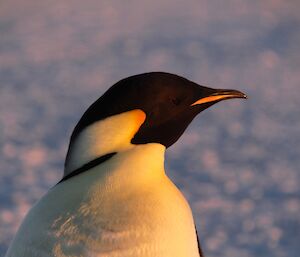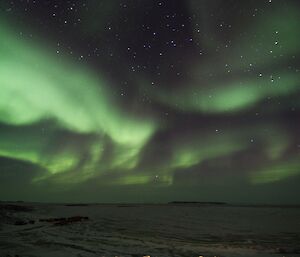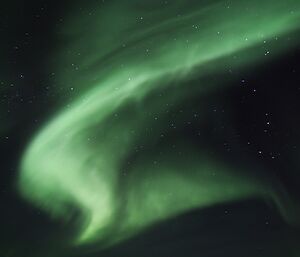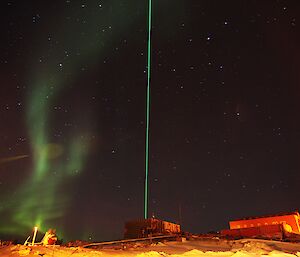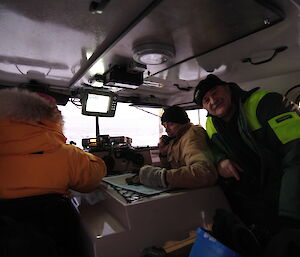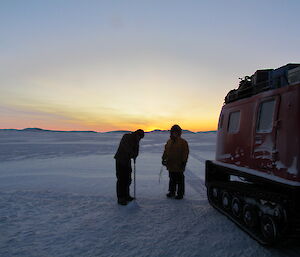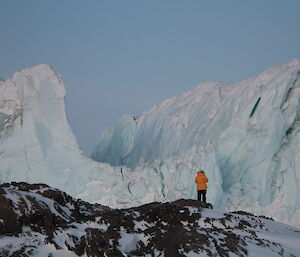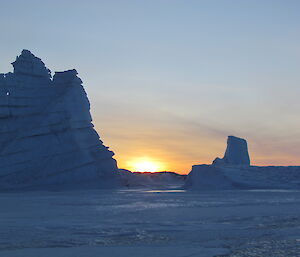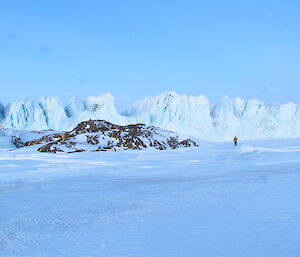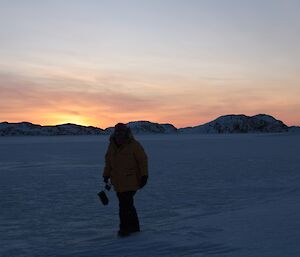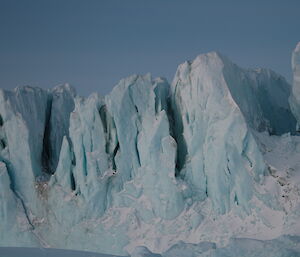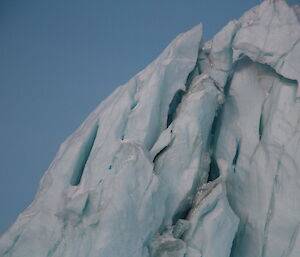While the sky on Tuesday the 10th, the day that the sun returned to the Vestfold Hills, was obscured by cloud we only had to wait until the weekend to have the opportunity to feel those warm golden rays (albeit incipient) on our faces.
This week at Davis: 20 July 2012
Doc’s Dozen with Brigid Dwyer
Brigid Dwyer
Chef / Emergency Response Team / Hydroponics / Fairy Godmother
Brigid, is this your first trip to Antarctica and what brings you here?
This is my first trip and I wanted the chance to experience something different.
What is it like being the chef here?
As long as I cook things that involve bacon and/or cheese, it’s smooth sailing. Actually, it’s a busy job, an awesome responsibility and also a great privilege.
If not a chef, what job would you do Brigid?
Gardener.
Best gig as a chef?
Too difficult to answer. There have been many!
(Davis station is pretty impressed with your efforts as the cook in the reality series ‘Outback House’)
What has been your best experience in Antarctica so far?
I think seeing the area in helicopters and boats, especially a trip to Kazak Island and the sunset iceberg cruises. I love the penguins, the dramatic and rapid seasonal changes and the view from the kitchen. There aren’t many chefs with a view like mine.
(Your performance as the Fairy Godmother in our midwinter Cinderella play was very memorable for us!)
Who inspires you Brigid?
My Mum and Dad.
What have you learned living in our little Davis community?
See no evil, hear no evil, speak no evil, and keep smiling. (…if only those kitchen walls could talk!)
What kind of car would you be Brigid?
A 1962 Holden EK special. (1962 was a very good vintage)
What do you like to cook for your family and friends?
They’re my guinea pigs! So, nothing fixed. I’ll make something that I like or want to try out or enjoy and hope they’ll like it.
What ingredient do you miss the most here at Davis?
Just the one? Mmmmmmm…maybe tomatoes, or fresh pineapple or fresh beans, capsicums, eggplants, rocket, mizuna, tatsoi, bok-choy, mangoes, bananas, oranges, cucumbers, mint…I could go on and on, but basically any type of fruit, vegetable or herb that isn’t frozen, pickled, canned or dehydrated!
Who are the ‘fussy eaters’ and who are the garbage disposal units here on station? Go ahead, name and shame them Brigid.
It’s not worth my life to say! Actually, most people here are pretty good all-rounders. They seem fairly content and I haven’t had many complaints. (Answered like a true diplomat)
Brigid what is your dream meal?
Cheese on toast.
Thank you very much for your wonderful insights Brigid. I am slightly disappointed you didn’t come clean with all the station gossip you must be privy to in the kitchen, but of course, you are the consummate professional.
A marine scientist on ice
It is not often that you get a marine biologist wintering in any of the Australian Antarctic stations. Our job is usually done over the busy summer months, after which, the cold sets in, the sun packs off and the animals stop doing their ‘thing'. Some are of the general opinion (ok, by some, I mean my DSL) that I have scammed (the good sort) myself a wintering gig, however I do not let such sentiments get much in the way of things (seeing as it has taken me three seasons to get to where I am now. YEAH!).
My main wintering job is to collect samples of seawater weekly from the Davis bay at different sites and different depths in the water column (you will read/have read more about it somewhere in this issue of This Week at Davis). Once that is done, I generally concentrate on making sense of data collected over the summer period and writing about it. I also lend an odd hand to the chef in the kitchen or to any of the other scientists or tradies if my help is required (hah). When I’m not particularly involved in anything ‘work’-related, I’ve been knitting to keep busy or learning Spanish from our El Salvadoran dieso (¡¡Linc tierne un trasero tan grande y jelatinoso! and ¿A la una y mediar nos vamos acostar?). My Spanish teacher insists that I’m not learning Spanish per se but only certain phrases that will be of no use in the real world.
Being Malaysian, wintering in Antarctica is about as far away from my comfort zone as physically possible. I was raised on a combination of temperatures above 28°C, patches of rainforest, the muggy smell of humidity and chillies and spices in everything, every day. Antarctica, I can assure you, is nothing like that.
That being said, I absolutely love my time down here. Some days may be filled with the monotony of routine, but you only need to look out towards the icebergs beyond the bay to be amazed by the surroundings all over again. Antarctica is like nowhere I've ever been. It is at once calm and foreboding, yet heartbreakingly beautiful, and it is that quality that I love.
Mel Ho
Sea water sampling
On the wintering program this year is a science project vaguely referred to as Seawater Sampling. It is, in fact, a science project run by the CSIRO Marine and Atmospheric Research Centre in Hobart. The data which we collect is for soon-to-be-Dr. Nicholas Roden’s PhD, who incidentally was a wintering met observer at Davis station in 2010.
Every week, a group of three winterers (myself and 2 other volunteers) venture out onto the sea ice and sampling is done at three sites at Davis Bay: O'Gorman Rocks, Ice Four and Ice Six (which are part of the sea ice drilling program). At each site, water is sampled at three different depths: right at the bottom of the sea-bed, midpoint of the water column and two metres below the water’s surface.
Once we've reached our designated site, a hole is drilled through the sea ice and a CTD (Conductivity, Temperature, Depth) sensor and a Niskin bottle is lowered simultaneously into the hole and down the water column until it reaches the bottom of the seabed. The CTD measures a range of seawater parameters as it descends down the water column, which include conductivity, temperature, depth (“Tada!”), salinity and a whole range of other very clever data. Meanwhile, the Niskin bottle is ‘activated’ and takes a sample of water at the specific depth required. The bottle is man-hauled back up to the surface (at Ice Six, this means hauling it out from a depth of ~90m) and the water is decanted into sample bottles which will then be returned to Australia for further analysis (total alkalinity, total dissolved CO2 and nutrient levels).
All this data will eventually provide a wider understanding of seawater parameters around Davis station and will help us decipher the impacts of future climate change on the marine environment with respect to seawater chemistry. Good times.
Mel Ho
Sea ice drilling
Every week during the winter, the sea ice thickness is measured at seven waypoints as part of an ongoing monitoring programme (AAS #2500) lead by Dr Petra Heil at the University of Tasmania. This information is fed into a larger study of the sea ice characteristics around the Antarctic.
Here at Davis the start of sea ice measurements mark the initial stages in establishing a profile of the sea ice and then using this for operational and recreational purposes. Sea ice is the main way that we on station manage to get out and about easily in the winter and once established becomes an extension of our routes to various localities in the Vestfold Hills.
Travelling on quads and by Hägglunds is far preferable to negotiating the rocky terrain that is covered in variable amounts of snow and ice on foot.
Amazing aurora
This past weekend provided a bumper aurora experience that was enjoyed by those on station and out in the field huts. Saturday and Sunday nights both afforded opportunities to get out under the stars and watch the electrons play across the sky in multi-coloured translucent bands of green and purple.
(Ed. And a view of that same aurora from outer space)
Sunday drive to the Sørsdal Glacier
Last Sunday it was a lovely day for a picnic. Steve was suffering from three months of cabin fever, so Adam and Mel said “We are taking you out to the Sordsal Glacier”. Jan joined us for the trip at last minute, and then there were four. We had to check the sea ice thickness on the way so it was clear for the rest of the season No problems with the ice at 1.2m thick. We had a smooth ride out with Jan at the wheel, and Adam doing the GPS references as well, as acting as our tourist guide.
The glacier is awe-inspiring with jagged cliffs of ice. A marked difference from the rocky Vestfold Hills. Many pics were taken and a bite of the picnic lunch was had. We continued along the face of the glacier toward the land. The sea ice was getting very bumpy and undulating as we got closer. We spied an ice arch which we had get a photo of and then headed home driving into the sunset. Bring on more picnics.

